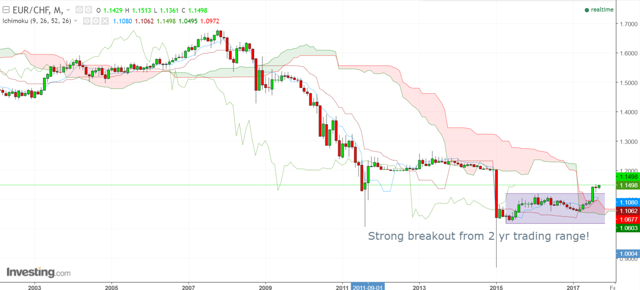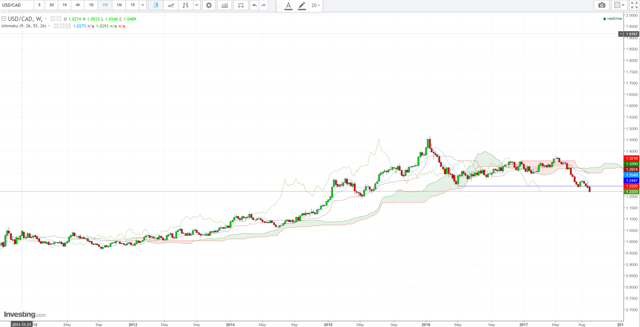It’s the most wonderful time of the year! But are there such times for investment trading, particularly when investing in Singapore?
As its name suggests, seasonality is a regular periodic fluctuation in an area of business according to a certain season. As we work on our developing our trading strategies towards becoming better at trading in Singapore, let’s take a look at how seasonality affects trading and how you, as an informed and conscientious trader, should act accordingly.
What is Seasonality?
Seasonality, by definition, is when data changes predictably every calendar year. This is different from cyclicality, which can last shorter or longer than a year. Also, in order to be considered ‘seasonal’, a trend has to repeat consistently: recessions, which can last from a year-and-a-half to two years, do not count as seasons.
Seasonality can either mean a holiday like Christmas, an actual season like spring or summer, or an event like elections, long weekends, or the opening of the school year or graduation.
Risk.net says that seasonality affects all commodity futures markets to some extent. The effect of seasonality on business can readily be seen in terms of sales or supply and demand, but might take a little more effort to recognise when it comes to investment trading.
An investor, for example, might base his decision to buy or sell his securities in a certain company because of a spike in revenue—without considering the season behind the reason for the spike.
Some investors in the stock market look to seasonality to help them make trading decisions, arguing that if historical data shows recurring results, then you should be able to duplicate those results successfully.
For instance, a company that manufactures air conditioners will see a jump in revenue during the summer, which is also when companies involved in travel and tourism usually enjoy increased profits. For the Christmas season, it will be the time for consumer goods and retail sector to rejoice.
What are some Seasonal Trends?
Other seasonal trading trends include the so-called ‘January Effect’, which gives traders an idea of the market’s performance for the rest of the year. The End of Quarter Effect, on the other hand, is the time of year when portfolio managers get the urge to ‘end on a high note’. This is done through aggressive bidding on shares that they already own to boost stock values for the time being.
The End of Quarter Effect is also quite similar to what happens in the market at the end of the year itself, AKA the Year-End Effect.
There is also a type of seasonality that refers to a period before a season, called the Pre-Holiday effect. This is when stock prices go up on the last trading day prior to the actual holiday: this year for Christmas, for instance, would be on December 22nd.
Some say the Pre-Holiday trend is caused by the general optimism in the air during a holiday season, and that the reduced market activity during these times of year also lowers overall market liquidity, which in turn affects stock prices.
Others say that Holiday trends in general are caused simply because everyone participating in the market expects the holiday at hand to affect market performance, and in acting accordingly, they effectually cause their own expectations to come to pass.
With forex trading in Singapore, seasonality can be observed during certain months in both currencies such as the USD and JPY, and commodity currencies such as AUD and CAD.
Seasonality as a Deciding Factor
So should you let seasonality affect your trading decisions? There are seasoned traders out there who advise against it. While history may repeat itself, it’s not a 100% fool-proof guarantee that the results you gained last year will be repeated this year or even the next.
Making seasonality the sole basis for your trading decisions is insufficient for justifying your trading and investment strategy. A Christmas rally, for instance, might be based mainly on the prevailing emotions of market players at the time (and as any savvy trader or investor will tell you, making trading or investment decisions based on emotions is a no-no).
It is also quite likely that investing based on seasonality will not be in sync with your personal risk appetite. You would do well to note that investment decisions based on seasonality comes with more risk, as well as its share of capital gains tax and transactions costs.
If a trader has a thorough understanding of how seasonality works, only then should he even consider it as a deciding factor in his trading decisions. Even then, this knowledge of seasonality only gives such a trader a slight advantage, at best.
Seasonality might appeal to those with a short-term outlook who are after quick gains before selling their shares and planning their next steps. For traders looking for long-term, consistent gains, they would do better to focus on an asset’s performance over longer periods of time instead of the changes brought about by the seasons.
Tread Carefully With Seasonality
Traders who do choose to factor seasonality into their strategies would do better to zoom in on seasonality per industry, instead of an entire market. For instance, if you invest in a particular company, consider how seasonal trends affect the products and services of that company and its competitors.
Take note, however, that the more industries you consider, the more variables come into play, and the effectiveness of seasonality as a deciding factor will drop. It is therefore better to focus on the seasonality of one industry at a time.
If you invest in a mutual fund or an exchange-traded fund or ETF, try to pinpoint the periods during the year in which the sector shows its strongest performance. Taking a close look at seasonal trends might also help those who are learning how to trade forex.
The difference between seasonality and ‘timing the market’ is another point an informed trader ought to bear in mind. Taking the current season into consideration is one thing; focusing on a short-term patterns to determine market highs and lows is quite another. Some experts believe that ‘timing the market’ is practically impossible.
Knowledge of a season’s effect on the market can inform your trading decisions, but it shouldn’t be the be-all and end-all of your investment strategy. When all’s said and done, seasonality isn’t a single, ‘guiding star’ for deciding trades to be used by traders, particularly those who are just starting out. Seasonality is just one of several other factors that you should consider when planning out your trades.
Learn techniques and strategies to help you become a more profitable and more consistent trader at TrackRecord Asia. Founded by professional traders, TrackRecord Asia puts you in touch with mentors and trainers with proven track records in investment banks and hedge funds, who will show you how to use a structured framework to form an effective investment process.
Achieve the level of trading performance you aspire to with TrackRecord. Get one month’s FREE subscription to our CIO’s Week Ahead Update and Traders’ Risk Call for updates and insights to give you the trading edge you need, today.
Sources:
https://www.investopedia.com/terms/s/seasonality.asp
http://www.blog.sanasecurities.com/seasonal-stocks-impact-seasonality-stock-prices/
https://finance.zacks.com/seasonal-stock-market-trends-5830.html
https://www.motifinvesting.com/blog/investing-based-seasonal-trends
https://learn.tradimo.com/advanced-stock-trading/how-seasonsa-holidays-affect-stocks
http://www.cbc.ca/news/business/taxes/playing-seasonal-investment-trends-to-your-advantage-1.1285947
https://www.investopedia.com/ask/answers/030415/how-does-seasonality-affect-financial-services-sector.asp
https://www.investopedia.com/articles/investing/101315/company-analysis-how-think-about-seasonality-trends.asp
https://www.ig.com/sg/trading-opportunities/2017/09/05/seasonal-trends-in-the-forex-market-39690




